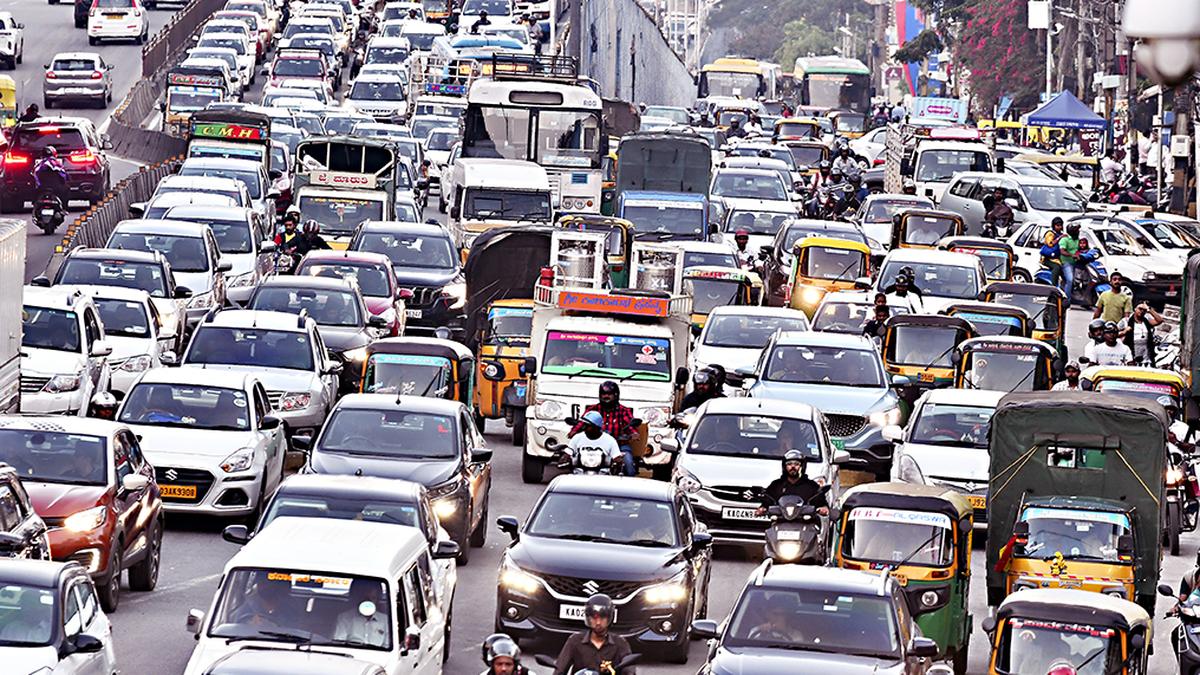
HGV prohibition timings modified on Saturdays in Bengaluru
The Hindu
The decision comes after a study by BTP showed that the peak hours on Saturday start later when compared to all other days.
Bengaluru Traffic Police (BTP) has modified the timings of restrictions on the movement of Heavy Goods Vehicles (HGV) on Saturdays owing to a shift in peak hours.
Until now, the movement of HGVs was prohibited from 7 a.m. to 11 a.m. and from 4 p.m. to 10 p.m. to ensure smooth flow of traffic in Bengaluru city. The modified regulations state that HGV movement will be prohibited between 10 a.m. and 2.30 p.m. and from 4.30 p.m. to 9 p.m. on Saturdays.
The decision comes after a study by BTP showed that the peak hours on Saturday start later when compared to all other days.
While traffic movement picks up from 7 a.m. and peaks between 9 a.m. and 10 a.m. on weekdays, on Saturdays, it picks up around 9 a.m. and peaks around 1 p.m, the study revealed.
“Peak hour usually starts after 11.30 a.m. on Saturdays. People tend to come out later than usual on Saturdays. Most schools have a holiday. Hence, the peak hour starts later. We will allow HGV movement between 2.30 p.m. and 4.30 p.m.,” said M. N. Anucheth, Joint Commissioner of Police (Traffic), Bengaluru.
He clarified that the timings of HGV movement will remain the same on all the other six days.

The Union Budget unveiled on February 1, 2025, has come at a time of unprecedented global uncertainty and a flagging domestic economy. The real GDP growth is estimated at 6.4% for 2024-25 and between 6.3-6.8% for 2025-26, a far cry from >8 percent growth required annually to make India a developed nation by 2047. While much attention has been devoted to the demand stimulus through income tax cuts, not enough is said about the proposed reforms in urban development, tariff rationalisation, and regulatory simplification aimed at making Indian cities and corporates more competitive. Since the majority of economic activity is located in cities (urban areas account for ~55% of GDP) and produced by large corporates (~40% of the national output and 55% of India’s exports), the above-mentioned reforms have a pivotal role in improving India’s trend growth rate. Below we unpack each reform.












